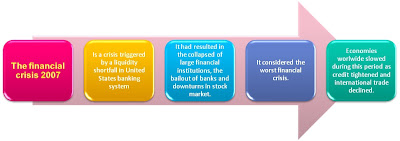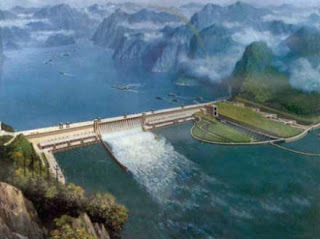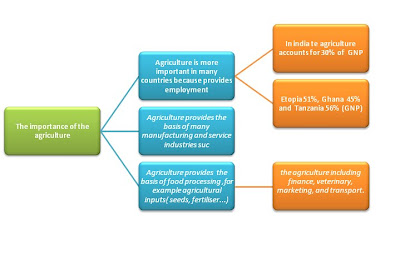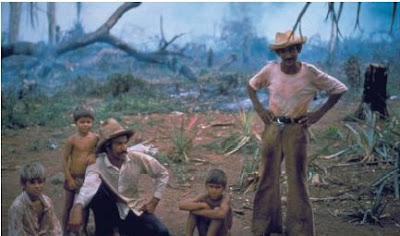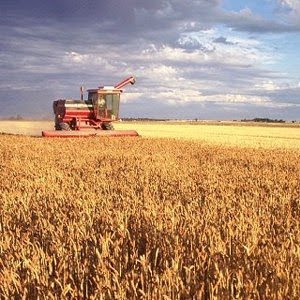

The Vietnam War (also known as Second Indochina War or American War in Southest Asia) lasted from 1959 to 1975. It was fought between North Vietnam and South Vietnam . North Vietnam was supported by the USSR, China and North Korea, while South Vietnam was supported by the United States with its allies South Korea, Thailand, Australia, New Zeland and the Philippines. This conflict between communists and pro-American countries was part of the Cold War.
Background and causes
Before World War II, Vietnam was part of the French colony of Indochina. During World War II, the Japanese occupied Indochina. When the French attempted to take back control after the Japanese surrendered, they were opposed by a Vietnamese army called the Vietminh. The Vietminh had been founded in 1941 by the communist party and was led by Hồ Chí Minh. In July 1954, France and the Vietminh signed the Geneva Peace Accord. The Vietminh became the government of North Vietnam while anti-communist Vietnamese, especially Catholics, "regrouped" in the South under the leadership of Bao Dai, a former emperor of Vietnam who had abdicated in 1945.
The United States backed the anti-communist government in South Vietnam. It began to send military advisers to help train and support the South Vietnamese army. The South was fighting the Viet Cong, which began a campaign of assassination in 1957. In 1959, North Vietnam dramatically increased its military assistance to the Vietcong, which then began attacking South Vietnamese military units.
1- Complete this table comparing the first and second industrial revolution:

· Introduction
In Victoria´s times there were big differences in homes, schools, toys and entertainments. No TV, no computers, no central heating, no cars (until the last few years of Victoria's reign). No air travel - unless you went up in a balloon! Many children went to work, not to school. Welcome to the Victorian world. It's time to find out how children (your great-great-great-grandparents perhaps!) lived more than a hundred years ago.
· What jobs did children do?
Children worked on farms, in homes as servants, and in factories. Children often did jobs that required small size and nimble fingers. But they also pushed heavy coal trucks along tunnels in coal mines. Boys went to sea, as boy-sailors, and girls went 'into service' as housemaids. Children worked on city streets, selling things such as flowers, matches and ribbons. Crossing boys swept the roads clean of horse-dung and rubbish left by the horses that pulled carts and carriages
· Where did Victorian children play?
Although many children worked in Victorian times, they still had time to play.
Outdoors, most Victorian children played in the street or in the fields and woods. Not many families had gardens big enough to play in, and there were no children's playgrounds. Rich families had playrooms or nurseries, but poorer children played wherever they could find space. With ten or more children often crammed into one or two rooms, play-space for poor families was a luxury. Playing outside was the usual escape.
· Books for children
Victorian children were often given books with improving moral lessons, about characters with names like Lazy Lawrence and Simple Susan.
3-Watch this video of modern times film, what do you think that Charles Chaplin want to say?
Charles Chaplin wants to say the industrialization move on quickly.

Edison is considered one of the most prolific inventors in history, as well as many patents in the United Kingdom, France and Germany. He is credited with numerous inventions that contributed to mass communication and in particular telecommunications. One of the most popular invention was the telegraph operator. Edison originated the concept and implementation of electric-power generation and distribution to homes, businesses, and factories – a crucial development in the modern industrialized world. His first power station was on Manhattan Island New York.
Edison´s invents:
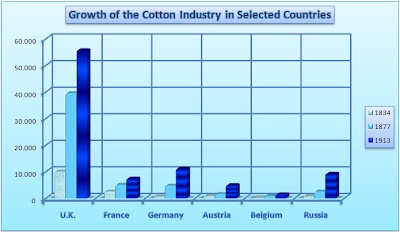 Table 4. Growth of the Cotton Industry in Selected Countries.
Table 4. Growth of the Cotton Industry in Selected Countries.The country with more industries of cotton was Great Britain and increase from 1834 to 1913. Great Britain was the country more development at the time. The country with more industries of cotton after Great Britain was Germany. Then Russia started the industries of cotton until 1840. The countries with less cotton industries were France, Austria, Belgium.

a) Which factors influence Spain´s tourism growth?
-The attractive climate.
-The long coastline.
-The accessibility of Spain to countries in North West Europe.
- The competitive price of Spanish tourism, especially accommodation and dining.
- The distinctive Spanish culture.
b) Which places include the “Costa del Sol”?
- Torremolinos
- Marbella
- Fuengirola
- Malaga
c) Mention some negative consequences of touristic growth?
The rapid growth of tourism has led to many unforeseen developments. For example Torremolinos before 1960 was a small fishing village and a tourist resort for only select tourist. However, the town is very important in the tourism
d) Where they do tourist come from Spain?
Most of travelers come into Spain to visit beaches, especially the south coast. Over 70% of tourists visited one of the six regions, namely the coastal areas and the Mediterranean islands.
1. B – Mark which ideas you think contribute to sustainable tourism:
- Promote equity in the distribution of the coast and benefits of tourism.
- Restrictive entry or pricing in special natural or historical places
- Welfare state: a politician system in which a government assumes the primary responsibility for assuring the basic health, education, and financial well-being of all its citizens through programs and direct assistance.
-Trade: It´s the voluntary exchange of goods, services, or both.
-Insurance: an arrangement by which a company gives customers financial protection against loss or harm such as theft or illness in return for payment premium.
- Health services:Before the term health care became popular, English-speakers referred to medicine or to the health sector and spoke of the treatment and prevention of illness and disease .
- Household consumption: The household is "the basic residential unit in which economic production, consumption , inheritance, child rearing and shelter are organized and carried out"; [the household] "may or may not be synonymous with family".
- Interest rate: is the price a borrower pays for the use of money they borrow from a lender, for instance a small company might borrow capital from a bank to buy a new assents for their business, and the return a lender receives for deferring the use of funds
-Tertiarysation: structural change and the role of knowledge-based services .
-Motorway: a road designed for fast traffic, typically with three lanes in each direction.
- Pipeline: a pipe or system of pipes designed to carry something such as oil, natural gas, or other petroleum-based product over long distance, often underground.
- Freight: are goods or produce transported, generally for commercial gain by ship, aircraft, train, van or truck.
- Leisure: or free time, is a period of time spent out of work and essential domestic activity.
- SPA: (Sales and Purchase Agreement) is a resort with bathing and mineral water
- Resort: is a place used for relaxation or recreation, attracting visitors for holidays or vacations. Resorts are places, towns or sometimes commercial establishment operated by a single company.
- Environment: all the external factors influencing the life of people, plants and animals.
- GATT- WTO: (General Agreement on Tariffs and Trade) was negotiated during the UN Conference on Trade and Employment and was the outcome of the failure of negotiating governments to create the International Trade Organization (ITO). GATT was formed in 1947 and lasted until 1994, when it was replaced by the World Trade Organization in 1995. The original GATT text (GATT 1947) is still in effect under the WTO framework, subject to the modifications of GATT 1994.

 a) What changes are shown in the pie-charts? In the first pie-chart (UK employment in 1920) the sector most important is the secondary, the next is the tertiary and the last is the primary sector. In the second pie-chart (UK employment in 1995) the most important is the tertiary sector and the least important is the primary sector.
a) What changes are shown in the pie-charts? In the first pie-chart (UK employment in 1920) the sector most important is the secondary, the next is the tertiary and the last is the primary sector. In the second pie-chart (UK employment in 1995) the most important is the tertiary sector and the least important is the primary sector. The graph express the transport most cheap depend the distances. In short distance the transport of commodities most cheap is the road. In stocking distance the transport of commodities most cheap is the rail or water. In long-distances the transport of commodities most cheap is the pipeline.
The graph express the transport most cheap depend the distances. In short distance the transport of commodities most cheap is the road. In stocking distance the transport of commodities most cheap is the rail or water. In long-distances the transport of commodities most cheap is the pipeline.Raw materials are the resources of the environment that are used in the
industry for the manufacturing of processed products.
Raw materials can be:
- Raw materials of animal origin: they come from farming and
fishing, like for example wool, skin, fish, etc.
- Raw materials of vegetal origin: vegetal (agricultural products) or forest
products (wood).
- Raw materials of mineral origin: the minerals are extracted from the
subsoil and they are transformed into metallic minerals (the metals are
extracted from them, like bauxite from which aluminium is obtained),
non-metallic minerals (like salt, sulphur, rocks used in construction...)
and power minerals (which become energy such as coal, oil...)
Mining is the activity which allows the extraction of mineral resources from the
subsoil. The mines are the places where these minerals are extracted and can
be underground mines or open mines.
and then classify:

And explain what raw materials are use to produce:
- Shoes: leather, rubber and different cloths
- Chairs: wool
- Juice: fruit
- Jewels: gold, silver, bronze and other materials
- Keys: with metallic materials
- Thermometers: mercury and glass
- Windows: glass
. The three gorges Dam will be over 2 km long and 100 m. high
. The lake will be over 600 km long
. Over 1 million people will have to be removed to make way for the dam and the lake.
. The river Yangtze provides 66% of China’s rice and contains 400 million people.
. The Yangtze drains 1.8 million km2 and discharges 700 km3 of water annually.
Advantages
. It will generate up to 18,000 megawatts, eight times more than the Aswan Dam (Egypt) and 50% more than the world’s largest existing HEP dam, the Itapu in Paraguay.
. It will enable China to reduce its dependency on coal.
. It will supply energy to Shangai (population 13 million), one of the world’s largest cities, and Chongqing (population 3 million), an area with high economic growth.
.It will protect 10 million people from flooding (over 300,000 people in China died as a result of flooding in the 1900s)
. It will allow shipping above the Three Gorges (the dams will raise water levels by 90 m.) and turn the rapids in the gorge into a lake.
. It will generate thousands of jobs.
The protests
. Most floods in recent years have come from rivers which join the Yangtze below the three Gorges dam
. The region is seismically active and landslides are frequent
.The dam may become silted up as a result of increased deposition. To reduce silt load afforestation is needed but resettlement of people will cause more pressure on the slopes above the dam.
. Up to 1.2 million people will have to be moved to make way for the dam.
. Most of the available resettlement land is over 800 m. above sea level and is colder and has infertile thin soils.
. Dozens of towns, such as Wanxian and Fuling with 140,000 and 80,000 people respectively, will be flooded.
. Archaeological treasures will be drowned.
. It will take between 15 and 20 years to build and could cost as much as 70 billion dollars.
Explain with your own words, at least four advantages and four disadvantages of the new dam.
Advantages: It produce more energy than the Awan dam (Egypt) and more than the world´s largest existing HEP dam, the Itapu in Paraguay.
-It´s good for reduce no-renewable resources.
-It supplies energy to Shangai and other cities with more population.
-It is generate thousands of jobs.
Disadvantages:
-1, 2 million people they have to go an other place for live
- Dozens of towns such as Wanxian and Fuling will be flooded.
- Archaeological treasures is drowned.
- The dam are very expensive, it cost as much 70 billion dollars.
4- Write a few lines about the main environmental problems of the planet caused by industrial activity, use text and drawing or photographs. Choose tw
- Greenhouse effect and Global Warming: The greenhouse effect is caused by an atmosphere containing gasses that absorb and emit infrared radiation. Greenhouse gases trap heat within the surface- troposphere system, causing heating at the surface of the planet or moon. This mechanism is fundamentally different from that of an actual greenhouse, which works by isolating warm air inside the structure so that heat is not lost by convection. The greenhouse effect was discovered by Joseph Fourier in 1824.
Global warming, a recent warming of the Earth´s surface and lower atmosphere, is believed to be the result of an “ enhanced effect” mostly due to human- produced increases in atmospheric greenhouse gases. This human induced part is referred to as anthropogenic global warming.
2- State the main 5 industrial MNCs and the country they are from.
a)Telefonica – It´s from Spain
b) BBVA- It´s from Spain
c) Movistar- It´s from Spain
d) Repsol- It´s from Spain
e) Santander-It´s from Spain
3- Could ZARA be a multinational? And Citroën? Write a brief repot about them.
ZARA-is the flagship chain storeof Inditex Group owned by Spanish tycoon Amancio Ortega , who also owns brands such as Massimo Dutti, Pulland Bear, Oysho, Uterqüe, Stradivarius and Bershka. The group is headquartered in A Coruña, Galicia, Spain, where the first Zara store opened in 1975. It is claimed that Zara needs just two weeks to develop a new product and get it to stores, compared with a six-month industry average, and launches around 10,000 new designs each year. Zara has resisted the industry-wide trend towards transferring fast fashion production to low-cost countries. Perhaps its most unusual strategy was its policy of zero advertising; the company preferred to invest a percentage of revenues in opening new stores instead.
Citröen-is a French automobile manufacture. Founded in 1919 by André Citröen, it was the one of the world's first mass-production car company outside of the USA. Since 1976 it has been part of PSA Peugeot Citröen, and its headquarters is on rue Fructidor in Saint-Ouen, Seine-Saint-Denis, near Paris. The brand celebrated its 90th Anniversary in 2009.
 The T-shirt Company say no at globalization and globalization suck but the company is a multinational because they have more companies around the world.
The T-shirt Company say no at globalization and globalization suck but the company is a multinational because they have more companies around the world.The CAP combines a direct subsidy payment for crops and land which may be cultivated with price support mechanisms, including guaranteed minimum prices, import tariffs and quotas on certain goods from outside the EU. Reforms of the system are currently underway reducing import controls and transferring subsidy to land stewardship rather than specific crop production (phased from 2004 to 2012). Detailed implementation of the scheme varies in different member countries of the EU.
GM Food-Genetically modified (GM) foods are foods derived from genetically modified organisms. Genetically modified organisms have had specific changes introduced into their DNA by genetic engineering, using a process of either Cisgenesis or Transgenesis. These techniques are much more precise than mutagenesis (mutation breeding) where an organism is exposed to radiation or chemicals to create a non-specific but stable change. Other techniques by which humans modify food organisms include selective breeding (plant breeding and animal breeding), and somaclonal variation.
Green revolution- Green Revolution refers to the transformation of agriculture that began in 1945, largely due to the life work One significant factor in this revolution was the Mexican government's request to establish an agricultural research station to develop more varieties of wheat that could be used to feed the rapidly growing population of the country.
CROPS – 1. A group of plants grown by people for food or other use, especially on a large scale in farming or horticulture. 2. The amount harvested from a plant or area of land, during one particular period of time.
CATTLE – 1. People who are regarded as lacking individuality, especially a crowd of people regarded as an undifferentiated mass. 2. Large domesticated mammals kept for the production of milk, meat, hides, and also as draft animals. Cows are common types of cattle.
RELIEF -1. Somebody who assumes a task or duty another completes his or her shift, or somebody who replaces another who is unable to work.
SOIL – 1. Agricultural life and work (literary).
LABOUR - 1. The workers, especially manual workers, in a country, company, or industrially considered as a group.
FARMER – 1. Somebody who operates a farm.
YIELD – 1. To produce something naturally or as a result of cultivation.
HERD – 1. A large number of domestic animals, especially cattle, often of the same breed, that are kept, driven, or reared together.
SEEDS – 1. The small dry hard fruit produced by cereal plants or grasses.
INPUT / OUTPT – 1. A contribution to something, especially comments or suggestions made to a group. Output: The act of producing.
